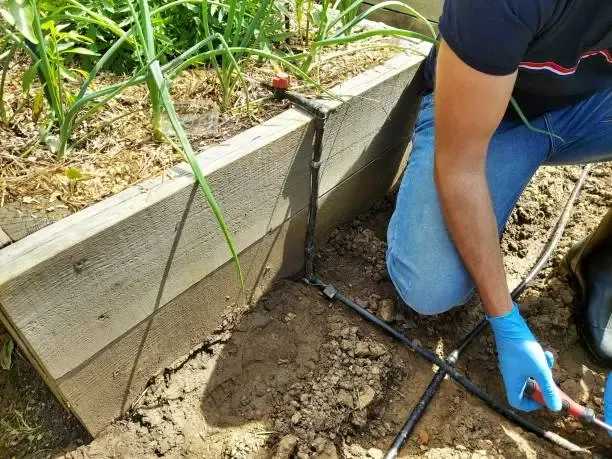Drip irrigation is a highly efficient method to water your crops or garden. It involves a network of pipes and emitters that deliver water directly to the base of each plant. This system not only conserves water but also ensures that each plant gets the exact amount of water it needs, right at its roots.
 |
| Photo Credit: Toni Jardon |
Drip Irrigation System Costs
The cost of installing a drip irrigation system can vary widely based on several factors, such as the size of the area you want to irrigate, the type of crops you're growing, and the complexity of the system. On average, residential drip irrigation systems can cost around $350, with a range between $200 and $850. For larger agricultural or commercial projects, the cost can go up to $3,500 per acre.
1. DIY vs. Professional Installation:
2. System Components:
3. Complexity of the System:
4. Labor Costs:
5. Additional Costs:
What Are the Components of a Drip Irrigation System?
- Tubing: This is like the main road for water in the system. It's the big hose that runs through your garden and carries water everywhere it needs to go.
- Emitters: These are the little nozzles that let water drip out slowly right where your plants need it. They're like tiny water fountains for each plant.
- Filters: Just like you have a filter in your kitchen tap, drip systems need them too. They keep dirt and other stuff from clogging up the emitters.
- Backflow Preventer: A backflow preventer is a device that stops water from flowing backward, ensuring that the clean water supply doesn't get polluted.
- Pressure Regulators: These keep the water pressure just right so the emitters work properly and don't get overwhelmed by too much water.
- Valves: Valves are like switches that control where the water flows. You can turn them on or off to water different parts of your garden.
- Connectors: These are the pieces that join the tubing together or connect the tubing to the emitters. They're like the corners and crossroads in the road system.
- Timer: A timer can be set to turn the water on and off automatically, so you don't have to remember to do it yourself.
Factors Influencing the Cost
- Size of the Area: The bigger the area you want to water, the more materials you'll need, and that means higher costs. A small garden will cost less than a big farm.
- Type of System: There are simple systems and fancy ones with all sorts of features. The more complex the system, the more it will cost.
- DIY or Professional: If you do it yourself, you'll save on labor costs. But if you hire someone, you'll have to pay for their time and expertise.
- Quality of Materials: Better quality materials usually cost more, but they might last longer and work better.
- Landscape: If your land is hilly or full of plants already, it might be harder to install the system, which can add to the cost.
- Local Prices: The cost of materials and labor can be different depending on where you live.
- Extras: Things like timers, sensors, or special emitters can add to the cost, but they can also make your system smarter and save water.
Conclusion
References & Resources
(1) How Much Does a Drip Irrigation System Cost to Install? https://cost-guide-ssr.homeadvisor.com/cost/lawn-and-garden/drip-irrigation-system/
(2) Sprinkler Irrigation System Cost: Analysis Per Acre, Hectare, and ... https://www.asiafarming.com/sprinkler-irrigation-system-cost-analysis-per-acre-hectare-and-square-foot-in-india
(3) 2024 Drip Irrigation System Cost — Drip Line Install Prices - HomeGuide https://homeguide.com/costs/drip-irrigation-system-cost
(4) Cost to Install a Drip Irrigation System - Homewyse https://homewyse.com/services/cost_to_install_drip_irrigation_system.html
(5) Cost to Install a Drip Irrigation System - Homewyse https://homewyse.com/services/cost_to_install_drip_irrigation_system.html

.png)



.jpg)

.jpg)
.jpg)



0 Comments